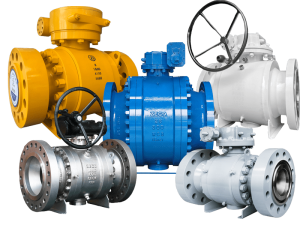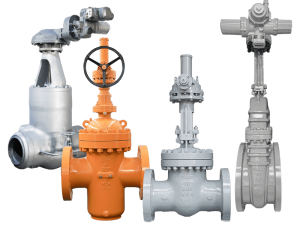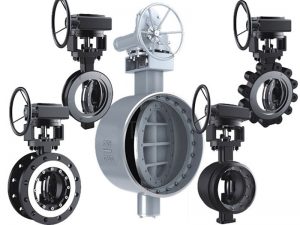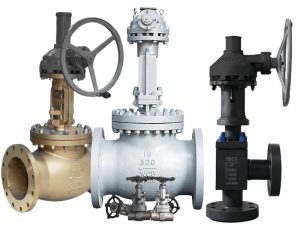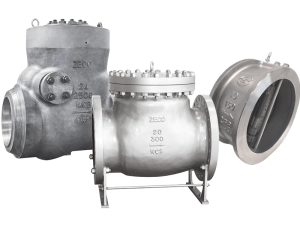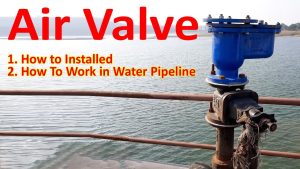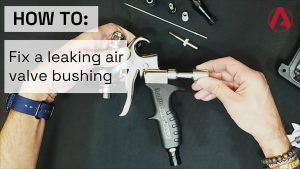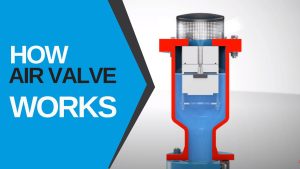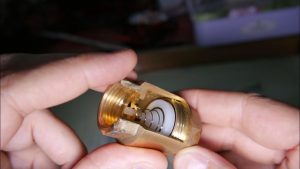Şunu hayal edin: Kritik bir boru sisteminde dirseklerinizin dibindeyken onu fark ediyorsunuz - elinizin altında parıldayan bir damlama kelebek vana. Bu küçük sızıntı saatli bir bombadır. Görmezden gelirseniz maliyetli kesinti süreleri, güvenli̇k tehli̇keleri̇veya binlerce kaynak israfı. İnanın bana, bu gibi sorunlar yüzünden altı rakamlı sözleşmeleri kaybeden fabrikalar gördüm.
Ama panik yapmayın. Bu vanayı onarmak sadece mümkün değildir; doğru yaklaşımla genellikle basittir. Bu kılavuzda tam olarak sinir bozucu damlamalardan tutukluk yapan disklere kadar kelebek vana arızalarının nasıl giderileceği. Onlarca yıllık endüstriyel saha çalışmalarından damıtılmış uygulanabilir adımlar alacaksınız - jargon yok, kabartma yok.
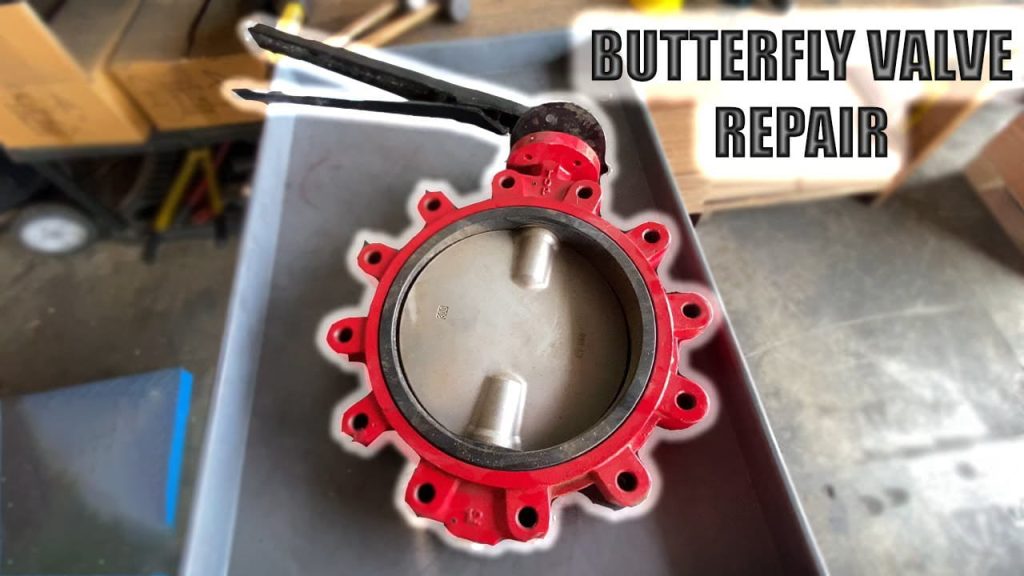
İçindekiler tablosu
- 🔍 Kritik Kelebek Vana Bileşenlerini (ve Nasıl Arızalandıklarını) Anlamak
- Kelebek Vanalar Nasıl Onarılır?
- 🔧 Adım 1: Valf Arızasını Teşhis Edin (Sökmeden Önce)
- 🛡️ Adım 2: Kilitleme/Etiketleme + Basınçsızlaştırma
- 🛠️ Adım 3: Stem Salmastra Sızıntılarının Onarılması (15 Dakikalık Onarım)
- 🌀 Adım 4: Yuva Contası Sızıntısını Giderme
- ⚙️ Adım 5: Sert Çalışmayı Çözme
- 🧰 Gelişmiş Sorun Giderme
- 🔄 Gelecekteki Arızaları Önlemek için Bakım Programı
- 🆘 Ne Zaman Bir Profesyonel Çağırılmalı
- ✅ Kelebek Vana Nasıl Onarılır: Son Çıkarımlar
🔍 Kritik Kelebek Vana Bileşenlerini (ve Nasıl Arızalandıklarını) Anlamak
Kelebek vanalar akışı kontrol eder çalıştıklarında çoğu vanadan daha iyidirler. Dehaları basitliklerinde yatar: Bir disk 90 derece döner Sıvıların geçmesine izin vermek veya tamamen engellemek için. Ancak her mekanik sistem gibi bunların verimliliği de dört temel bileşene bağlıdır:
- Disk: Düz "kelebek" plaka yuvaya karşı sızdırmazlık sağlar.
- Koltuk: Sızdırmazlığı oluşturan elastomer veya metal halka (kimyasallar için EPDM/NBR, buhar için paslanmaz çelik).
- Kök: Diski aktüatöre bağlayan şaft. Aşırı yüklenme durumunda bükülmeye yatkındır.
- Aktüatör: Manuel kol, pnömatik piston veya gövdeyi döndüren elektrik motoru.
Başarısızlık rastgele değildir. Sızıntılar veya sertlik bu suçlulardan birini haykırır:
⚠️ Aşınmış koltuk (Saha çalışmalarımdan 70% aşındırıcı sıvıların önce koltukları yediğini tespit etti)
⚠️ Kök salmastra sızıntıları (grafit ambalaj ısı döngüleri altında bozulur)
⚠️ Disk yanlış hizalanması (90% bakım yeniden montaj hatalarından sonra meydana gelir)
⚠️ Enkaz birikmesi (hiç siltle tıkanmış bir vananın kapanmayı reddettiğini gördünüz mü? Ben gördüm).
Kelebek Vanalar Nasıl Onarılır?
🔧 Adım 1: Valf Arızasını Teşhis Edin (Sökmeden Önce)
Dur. Telefonunu al. Net fotoğraflar çekin:
- Sızıntı yeri: Yuva, gövde veya flanş bağlantıları?
- Çalışma torku: Normalden daha mı sert? Kuvvet değerlerini not edin.
- Arıza anında disk konumu: Akışa paralel mi? 45°'de sıkışmış mı?
Profesyonel İpucu: 90°F+ Teksas rafinerilerinde termal genleşmenin metal yuvaları büktüğünü gördüm. Ortam sıcaklığını daima çapraz kontrol edin.
Hızlı Hata Ağacı:
| Semptom | Muhtemel Neden |
|---|---|
| Flanşta sızıntı | Gevşek cıvatalar veya hasarlı conta |
| Gövde çevresinde sızıntı | Aşınmış ambalaj |
| Disk mühürlenmiyor | Koltukta döküntü veya bükülmüş gövde |
| Aktüatör sıkışmış | Eğilmiş mil veya sıkışmış yatak |
🛡️ Adım 2: Kilitleme/Etiketleme + Basınçsızlaştırma
Güvenlik kontrol listeniz (⛔ atlama = hayati tehlike riski):
- Yukarı/aşağı akışları izole edin blok valfler aracılığıyla. Kalibre edilmiş göstergeler kullanarak sıfır basıncı doğrulayın.
- OSHA 1910.147 uyarınca Kilitleme/Etiketleme. Örnek: "VANA 7B BAKIM İÇİN DEVRE DIŞI - ENERJİ VERMEYİN."
- ANSI sertifikalı KKD kullanın: Kesilmeye dayanıklı eldivenler, kapalı gözlükler, çelik burunlu botlar. Kimyasallar mı? Asit kıyafetleri ekleyin.
- Test atmosferi toksik kalıntılar (H₂S, klor) için.
2025 OSHA istatistiği: Valf yaralanmalarının 37%'si atlanan basınç düşürme işleminden kaynaklanmaktadır.
🛠️ Adım 3: Stem Salmastra Sızıntılarının Onarılması (15 Dakikalık Onarım)
Araçlar: Tork anahtarı, OEM ambalaj kiti, pirinç fırçalar.
- Aktüatör cıvatalarını sökün (ISO 5211 standardı).
- Salmastra takipçisi somununu gevşetin-Kıvılcım çıkarmayan aletler kullanarak gövde kanallarını temizleyin.
- Eski salmastra halkalarını çıkarın. Kritik: Asla bir ambalaj kancası ile hafifçe kaldırmayın.
- Katmanlı yeni spiral sargılı grafit ambalajek yerlerini 90° aralıklarla kademelendirin.
- Rakor cıvatalarını üçte bir oranında torklayın (örneğin, 30 ft-lb → 60 ft-lb → 90 ft-lb). Aşırı sıkma ambalajı parçalar.
Test: Valfi 5 kat çevirin. Sızıntı yok mu? Başardın.
🌀 Adım 4: Yuva Contası Sızıntısını Giderme
Araçlar: Metalik olmayan kazıyıcı, valf uyumlu yağlayıcı, yedek yatak.
- Yıkama boru hattı kalıntıları temizlemek için yukarı akış (50 psi hava patlamaları kullanıyorum).
- Valfi çıkarın (flanş pabuçlarını sökün, önce boru ağırlığını destekleyin!).
- Koltuğu ve diski kontrol edin parlak ışık altında. Kontrol edin:
- 1 mm'den derin kesikler/çizikler? Koltuğu değiştirin.
- Metal koltuklarda çukurlaşma? Makine yeniden yüzey.
- Sızdırmazlık yüzeylerini temizleyin izopropil alkol ile -sıfır yağ kalıntısı.
- Gövdeyi yağlayın hafifçe (EPDM koltuklar için silikon bazlı).
- Yeniden takın, cıvataları çapraz düzende torklayın (ASME B16.34 spesifikasyonları):
1 - 3 ╲ ╱ + ╱ ╲ 4 - 2
⚙️ Adım 5: Sert Çalışmayı Çözme
Genellikle saplar veya rulmanlar. Bunu takip et:
- Mil gövdesini sökün-gövde düzlüğünü ölçün (<0,002″ sapma/ft).
- Burçları değiştirin eğer çizilmişse (bronz burçlar kumlu sıvılarda plastikten daha uzun ömürlüdür).
- Polonya sapı 600 kum zımpara bezi ile. Asla taşlama toleransı kaybı sızıntılara neden olmaz.
- Disk merkezlemesini doğrulayın (kaliperler kullanın-disk karoseriyi eşit şekilde temizlemelidir).
Saha Çalışması: Houston'daki bir su tesisinde, kasırganın silt girişinden sonra bükülmüş gövdeler 200%'ye sıçradı. Sel sonrası, 100% disk merkezleme kontrolleri geri aramaları azalttı.
🧰 Gelişmiş Sorun Giderme
| Yinelenen Arıza | Kök Neden | Düzeltme |
|---|---|---|
| Koltuk hızlı aşınır | Kavitasyon hasarı | Difüzör plakası takın veya vana boyutunu yükseltin |
| Aşınmış gövdeler | Klor hizmetinde düşük dereceli SS | Hastelloy gövdelere geçiş |
| Aktüatör tekliyor | Nemli hava beslemesi | Sıralı kurutucu + 5 mikron filtre ekleyin |
2025 Notu: Üçlü ofset metal koltuklar Başarısız mı oluyorsunuz? Diskleri lazerle hizalayın; manuel yöntemler mikron düzeyindeki çarpıklıkları gözden kaçırır.
🔄 Gelecekteki Arızaları Önlemek için Bakım Programı
- Aylık: Sıkışmayı önlemek için valfleri 0→100% çevrimine sokun.
- Üç Aylık: Mil yağlayıcısını değiştirin (ISO 16048 uyumlu gres kullanın).
- Yıllık: 1,5x çalışma basıncında hidro-test.
- Profesyonel İpucu: Bulamaç sistemlerinde yukarı akış filtre süzgeçleri 80% ile yuva aşınmasını azaltır.
🆘 Ne Zaman Bir Profesyonel Çağırılmalı
Kumar oynamayın:
- Kriyojenik valfler (-320°F sıcaklık contaları kırılgan hale getirir).
- API 598 sertifikalı sistemler (belgelendirilmiş izlenebilirlik gerektirir.
- Körük sızdırmaz gövdeler-özel aletlere ihtiyaç vardır.
Gerçek Konuşma: Buhar vanası onarımı için $1,200 fatura kestim. Neden? Yanlış bir adım = haşlanma tehlikesi. Sınırlarınızı bilin.
✅ Kelebek Vana Nasıl Onarılır: Son Çıkarımlar
- Önce teşhis edin: Semptomları kök nedenlerle eşleştirin.
- Güvenlik isteğe bağlı değildir: Kilitleme, KKD ve sıfır basınç hayat kurtarır.
- Yumuşak parçaları değiştirin: Koltuklar/paketleme 85% sızıntıları giderir.
- Önleme > Onarım: Rutin döngüler ve filtreler kesinti süresini yener.
Bu sızıntı şu anda göz korkutucu görünebilir, ancak bu planla bunu başarabilirsiniz. Unutmayın: Valfler arızalanır. Hazırlıklı teknisyenler bozulmaz. Şimdi git o akışı mühürle.

